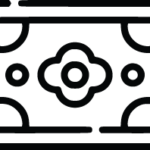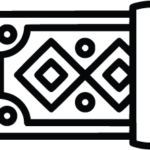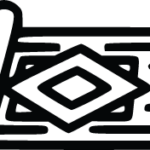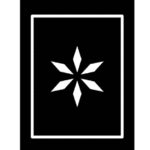Blogs
Moroccan Area Rugs| Handmade Beauty and Timeless Design
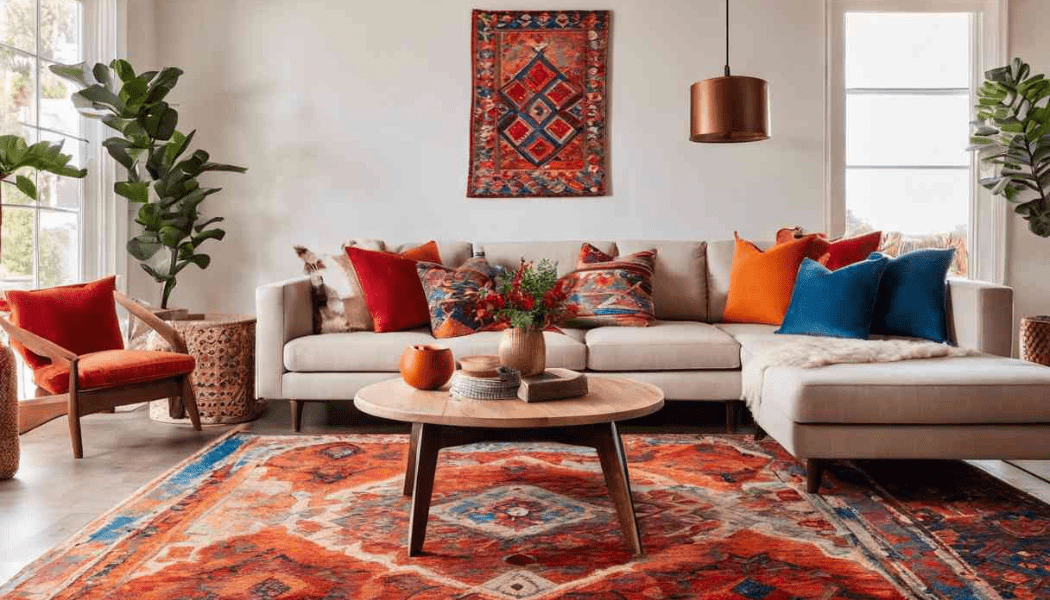
Introduction
Few design elements capture the imagination quite like authentic Moroccan rugs. These captivating textiles transport us to the vibrant souks of Marrakech, the snow-capped Atlas Mountains, and the windswept Sahara Desert, all while anchoring our contemporary living spaces with warmth, texture, and unmistakable character. Whether you're drawn to their geometric patterns, plush textures, or rich cultural heritage, Moroccan floor coverings offer something truly special that mass-produced alternatives simply cannot replicate.
Moroccan Rug Traditions
Understanding the cultural context of these remarkable textiles deepens appreciation for their artistry and value. Moroccan rug weaving traditions stretch back thousands of years, with Berber tribes creating functional textiles that also served as cultural expressions, storytelling mediums, and even dowry items. Each tribal region developed distinct styles, patterns, and techniques that expert collectors can identify at a glance.
The Berber people, Morocco's indigenous inhabitants, created these textiles using wool from their own flocks, natural dyes from local plants and minerals, and weaving techniques passed from mother to daughter across generations. Unlike Persian or Turkish traditions that emphasized precision and symmetry, Moroccan weavers embraced asymmetry, improvisation, and personal expression. This freedom results in pieces that feel alive and organic rather than rigidly formal.
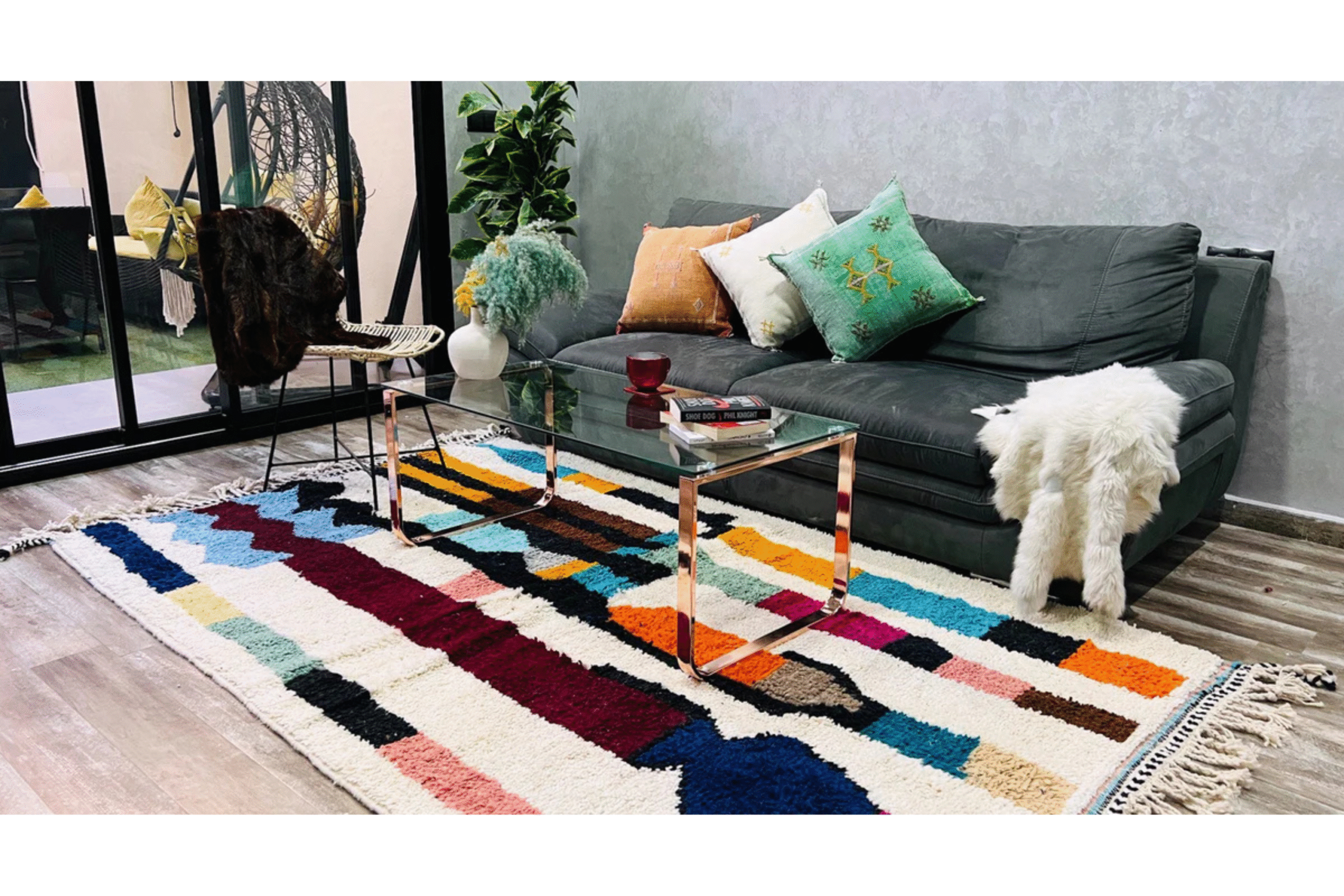
Traditional Moroccan weavings served multiple purposes beyond decoration. Thick pile rugs provided insulation in mountain regions where temperatures plummet at night. Flat-weave pieces functioned as sleeping mats, prayer rugs, and wall hangings. Some served ceremonial purposes during weddings and other important life events. This practical heritage means authentic pieces combine beauty with exceptional durability. They were built to withstand real life, not just look pretty in showrooms.
Characteristics of Moroccan Area Rugs
What makes a Moroccan area rug instantly recognizable? Several key design elements define this aesthetic, though remember that authentic tribal pieces often break their own rules, adding to their charm and individuality. Geometric patterns dominate Moroccan textile design. Diamonds, triangles, zigzags, and abstract symbols create compositions that feel both primitive and sophisticated. These shapes often carry symbolic meaning within tribal cultures, representing fertility, protection, femininity, or connection to the natural world. The seemingly random placement of motifs reflects the improvisational nature of traditional weaving, where artisans work without predetermined patterns.
Texture plays a crucial role in Moroccan design. Many pieces feature high, shaggy piles that create incredible softness and visual depth. The thick wool feels luxurious underfoot while providing practical warmth. This plush construction contrasts beautifully with the geometric severity of patterns, creating textiles that engage multiple senses simultaneously.
Color palettes in authentic Moroccan rugs range from monochromatic natural wool tones to vibrant combinations of red, orange, blue, and green. Traditional pieces often feature undyed wool in shades of cream, brown, and charcoal, while more elaborate examples incorporate natural dyes that produce rich, complex hues. The color choices often indicate regional origin and tribal affiliation.
Asymmetry and imperfection characterize genuine handmade pieces. Unlike machine-made replicas with perfect uniformity, authentic Moroccan rugs show slight irregularities in pattern, spacing, and shape. These "flaws" prove human creation and add to each piece's unique character. Weavers even intentionally include mistakes, believing that only the divine creates perfection.
Moroccan Rug Styles
Morocco's diverse geography and tribal populations produced distinct rug styles, each with recognizable characteristics. Understanding these variations helps you identify authentic pieces and choose styles that suit your aesthetic preferences.
Beni Ourain rugs represent perhaps the most internationally recognized Moroccan style. Originating from the Atlas Mountains, these pieces feature cream or ivory backgrounds with black or dark brown geometric patterns. The minimalist aesthetic, plush pile, and neutral palette make Beni Ourain designs especially popular in contemporary and Scandinavian-inspired interiors. Azilal rugs come from the Azilal province in the High Atlas Mountains. These colorful, expressive pieces often feature abstract designs, vibrant color combinations, and asymmetrical compositions that feel almost like modern art. Azilal weavers use bright pinks, oranges, purples, and blues alongside traditional patterns, creating playful, energetic textiles.
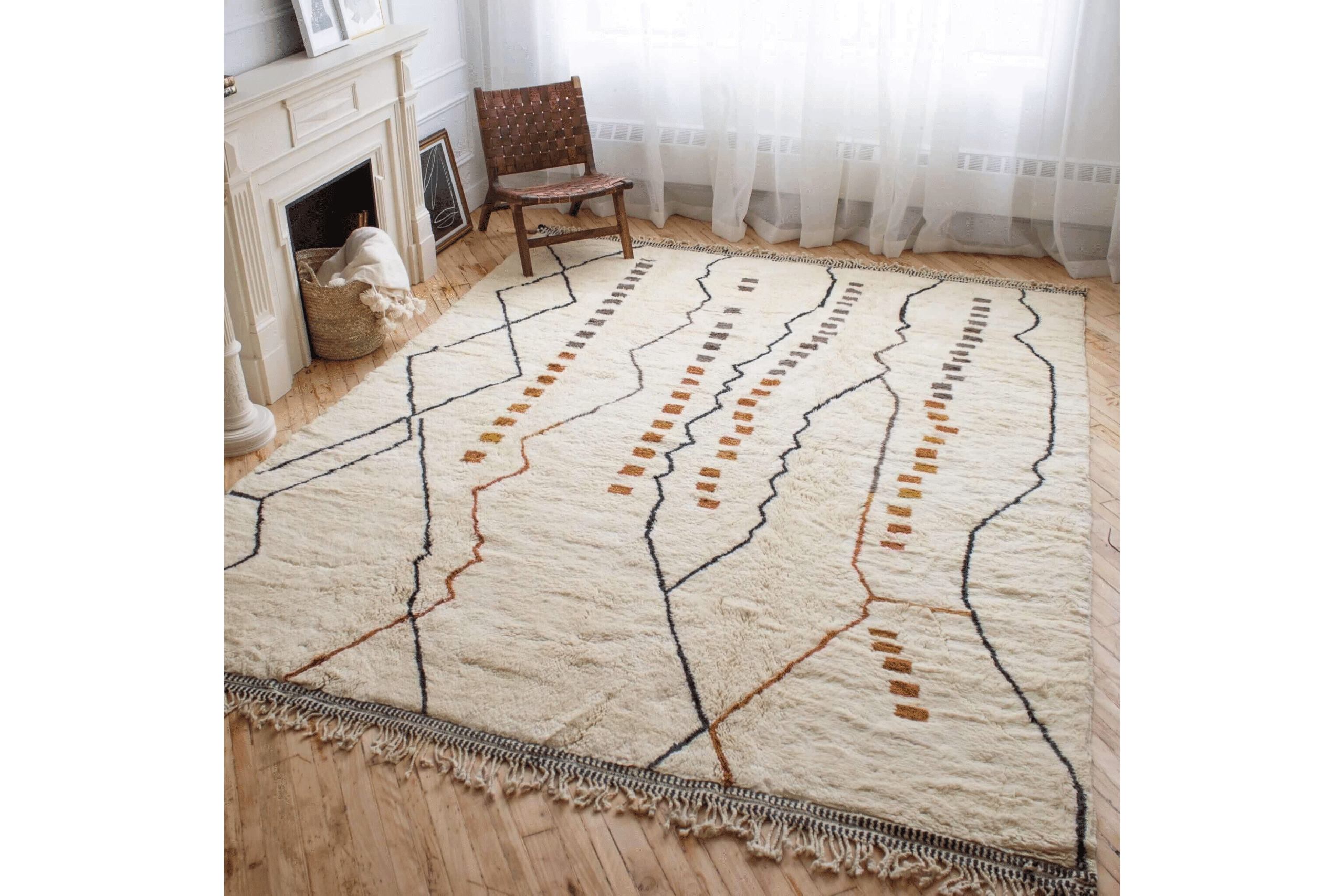
Boucherouite rugs utilize recycled textiles rather than wool, creating colorful, eclectic pieces from fabric scraps. These demonstrate Berber resourcefulness and environmental consciousness while producing affordable, vibrant options. The random color combinations and mixed materials give Boucherouite rugs a bohemian appeal that suits casual, eclectic spaces. Kilim-style Moroccan flat-weaves offer reversible, thin-profile options perfect for layering or spaces with door clearance concerns. These pieces showcase intricate patterns and colors without pile, making them versatile for various applications. The flat construction also makes them easier to clean than high-pile alternatives.
Unique Appeal of Round Moroccan area Rugs
While rectangular formats dominate rug production globally, round Moroccan rug options offer distinctive aesthetic and functional advantages. These circular textiles break visual monotony, soften angular spaces, and create intimate conversation areas within larger rooms.
Circular rugs work beautifully in specific applications that rectangular pieces cannot address as effectively. Position a round rug beneath circular dining tables for perfect proportional harmony. Use them to define cozy reading nooks, anchor seating clusters, or create welcoming entries in round or curved architectural spaces like turrets or bay window areas.
The visual impact of circular rugs differs significantly from rectangular alternatives. Where rectangles create definition and boundaries, circles feel more fluid and inviting. They guide eye movement in circular patterns rather than linear paths, creating different spatial dynamics. This makes round options particularly effective in rooms with strong linear elements where you want to introduce organic contrast.
Moroccan weavers excel at creating round pieces because their improvisational techniques adapt easily to circular formats. The geometric patterns and organic designs translate beautifully to round compositions without requiring the careful border construction that challenges some traditional rug styles. Authentic round Moroccan textiles maintain all the textural richness and handcrafted quality of rectangular counterparts while offering fresh design possibilities.
Consider the room function when evaluating round versus rectangular options. Circular rugs suit casual, conversation-focused spaces particularly well, but can prove challenging in formal settings or rooms requiring clear traffic paths. They work wonderfully in children's playrooms, breakfast nooks, and intimate sitting areas where their soft edges enhance the welcoming atmosphere.
Size & Dimensions
Selecting appropriate dimensions significantly impacts how successfully your Moroccan rug integrates into your space. Understanding how different sizes function helps you make confident choices that enhance rather than hinder your room's design.
The popular Moroccan rug, 8x10 in dimension, offers versatility for various medium to large spaces. This substantial size accommodates most standard living room furniture arrangements, allowing sofas and chairs to sit partially or completely on the rug. In dining rooms, eight-by-ten dimensions work well with tables seating six to eight people, providing adequate space for pulled-out chairs to remain on the textile.
This medium-large format strikes an ideal balance between presence and practicality. It creates a significant impact without overwhelming rooms or requiring excessive furniture rearrangement during cleaning. The 8x10 size also hits a sweet spot in pricing, large enough to feel substantial but not reaching the premium prices of truly oversized pieces.
When considering an eight-by-ten piece, measure your space carefully and mark the dimensions with painter's tape on your floor. Live with these boundaries for a few days, observing traffic patterns and furniture relationships. This simple step prevents costly sizing mistakes that plague rug purchases. Smaller dimensions suit specific applications beautifully. Four-by-six or five-by-seven pieces work in entryways, home offices, bedrooms, or as layering elements. Larger sizes beyond ten-by-twelve suit spacious great rooms, formal dining areas, or open-concept living spaces where you need to define zones within larger areas.
Quality and Authenticity
With Moroccan-style rugs flooding the market at various price points, distinguishing authentic handmade pieces from mass-produced imitations becomes crucial for informed purchasing. Several key indicators help you evaluate quality and authenticity.
Examine the rug's back as carefully as the front. In genuine handmade pieces, the pattern appears almost as clear on the reverse as on the face. Hand-knotted construction creates this characteristic, while machine-made alternatives show backing materials, glue, or mesh. The back should also display the same irregularities visible on the front—perfectly uniform backs indicate machine production.
Feel the textile's weight and flexibility. Authentic Moroccan rugs possess substantial weight from dense wool and tight construction. They should feel heavy and solid when lifted. The textile should also have natural flexibility—it should fold and drape rather than feel stiff or board-like, which indicates chemical treatments or backing materials.
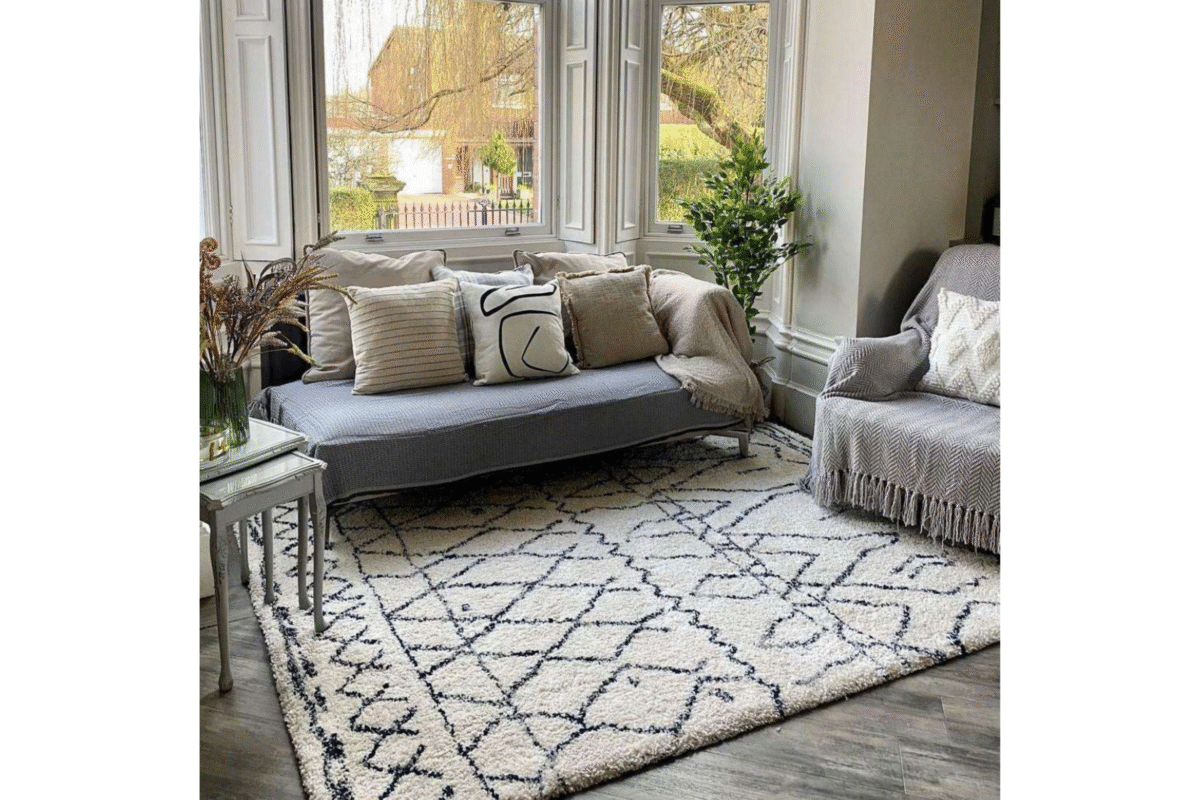
Inspect the wool quality closely. Authentic pieces use hand-spun wool with natural variation in fiber thickness. Run your hands through the pile—it should feel soft yet resilient, with natural lanolin creating slight oiliness. Synthetic fibers feel uniformly smooth, often with an artificial sheen. Quality wool springs back when compressed, while inferior materials or worn-out fibers stay flattened.
Look for natural dye characteristics if the piece features colors beyond natural wool tones. Natural dyes produce colors with depth and variation—individual yarn strands show slight color differences rather than uniform hues. Natural dyes also fade gracefully over time, developing patina rather than appearing washed out or damaged.
Opportunities and Considerations
For designers, retailers, or homeowners furnishing multiple spaces, exploring Moroccan rugs wholesale presents intriguing possibilities. Buying directly from importers or in bulk can offer significant cost savings, but this approach requires knowledge and careful evaluation.
Wholesale purchasing works best when you understand exactly what you want. Research regional styles, dimensions, and quality markers before approaching wholesale sources. This knowledge helps you evaluate offerings critically and negotiate effectively. Without this foundation, the overwhelming variety and sales pressure can lead to poor decisions.
Legitimate wholesale sources include importers who work directly with Moroccan cooperatives, dealers who purchase container loads for resale, and trade-only showrooms that serve design professionals. Verify credentials and reputation before committing to large purchases. Request references from other buyers and research online reviews to identify reliable sources.
Understand that wholesale pricing requires trade-offs. You may need to purchase minimum quantities, accept longer delivery times, or buy from available inventory rather than special-ordering specific pieces. Quality can vary widely in wholesale contexts, making personal inspection crucial whenever possible. Some wholesale sources mix handmade pieces with machine-made alternatives, requiring careful evaluation of each item.
For individual homeowners, wholesale purchasing makes sense primarily when furnishing entire homes or investment properties requiring multiple rugs. The time investment and quantity requirements often outweigh savings for single-rug purchases. However, understanding wholesale pricing helps you negotiate better retail prices by knowing reasonable cost structures.
Black and White Moroccan Rug Designs
Among countless color combinations available in Moroccan textiles, black and white Moroccan rug options hold special appeal for contemporary interiors. This high-contrast palette delivers dramatic visual impact while maintaining versatility that suits evolving décor.
The monochromatic approach lets geometric patterns take center stage without color competing for attention. The stark contrast between dark symbols and light backgrounds creates a graphic punch that works beautifully in minimalist, modern, and Scandinavian-inspired spaces. These pieces bridge traditional craft and contemporary aesthetics seamlessly.
Black and white Moroccan rugs demonstrate remarkable versatility in styling. They coordinate effortlessly with virtually any color palette, add warmth with wood tones and plants, create drama with jewel-toned accents, or maintain minimalism with all-white furnishings. This adaptability means your rug investment works through multiple décor evolutions without requiring replacement.
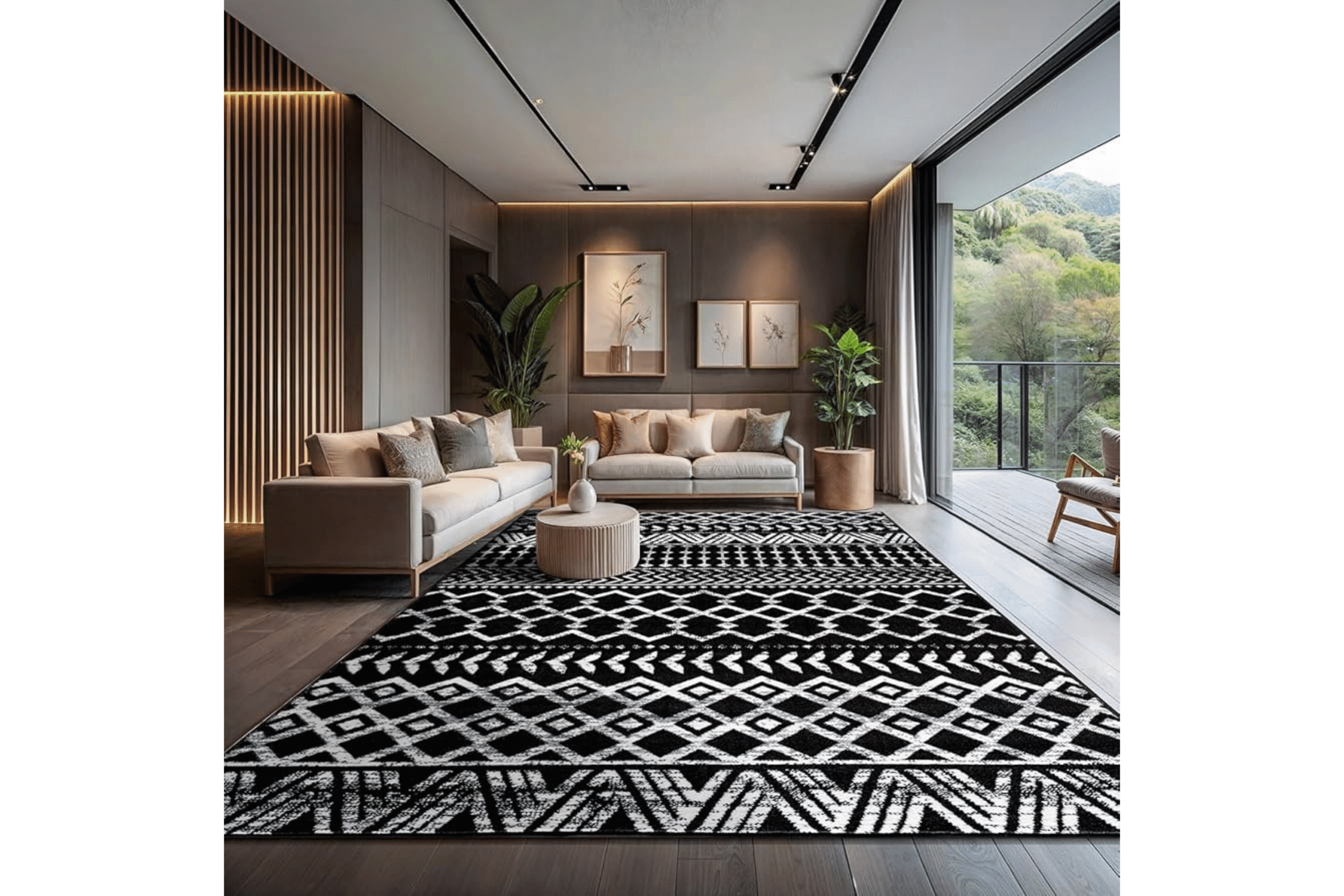
Despite their neutral palette, these pieces avoid feeling boring or safe. The bold geometric patterns, textural depth from pile construction, and handcrafted irregularities create visual interest that colored minimalist rugs often lack. The high contrast ensures the rug maintains presence without relying on color for impact.
Authentic black and white Moroccan textiles typically feature natural undyed cream or white wool backgrounds with patterns in undyed dark brown or black wool. This natural approach produces colors with depth and subtle variation that solid black and white cannot achieve. Some pieces incorporate very subtle grey or brown tones that add warmth and complexity to the palette.
Blue Moroccan Rugs
For those drawn to color but seeking sophistication, blue Moroccan rug choices offer the perfect balance. Blue appears frequently in Moroccan textiles, with various shades carrying cultural significance and producing distinctly different design effects.
Indigo blues create rich, deep tones that add elegance and depth to spaces. This traditional color, derived from natural indigo plant dyes, produces complex hues ranging from navy to bright true blue. Indigo-dyed Moroccan rugs pair beautifully with white walls and natural materials, creating serene, coastal-inspired aesthetics without literal beach themes.
Lighter sky blues and turquoise tones bring airiness and optimism to interiors. These fresher shades work wonderfully in bedrooms, bathrooms, and casual living spaces where you want to create uplifting atmospheres. The cooler tones also help small spaces feel more expansive while maintaining warmth through handcrafted texture.
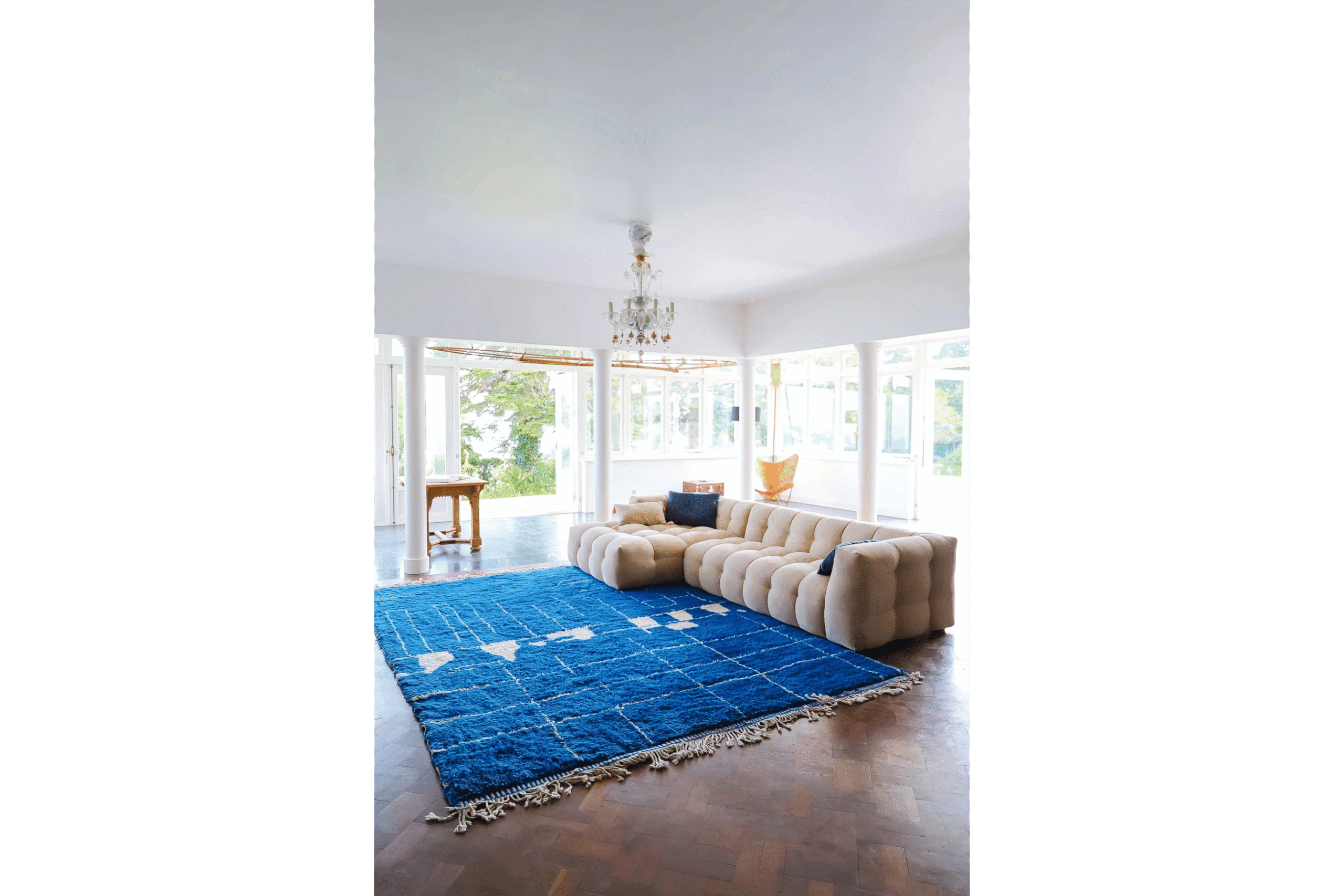
Many Moroccan rugs incorporate blue alongside complementary colors orange, red, cream, and green frequently appear with blue in traditional palettes. These combinations prevent the cool blue tones from feeling cold, creating balanced compositions with both energy and calm. The color interactions in authentic pieces demonstrate sophisticated color theory that contemporary designers study.
Blue rugs influence room psychology significantly. Blue's associations with sky and water create subconscious connections to nature and open spaces. This makes blue textiles particularly effective in urban environments or windowless rooms where bringing outdoor elements inside enhances wellbeing. The color also encourages relaxation and focus, making blue rugs excellent choices for bedrooms, home offices, and meditation spaces.
Moroccan Rug Carpet Versatility
Understanding how Moroccan rug carpet options fit into the broader flooring category helps you make strategic decisions about where and how to use these textiles. While "rug" and "carpet" often function interchangeably in casual conversation, understanding their technical differences clarifies usage options.
Traditional definitions distinguish rugs as movable floor coverings under specific sizes, while carpets refer to permanent installations or very large textiles. However, in practical terms, Moroccan pieces function primarily as area rugs—decorative textiles that define spaces without permanent installation. This portability represents one of their key advantages.
The flexibility of area rugs versus wall-to-wall carpeting offers numerous benefits. You can take your Moroccan textile when you move, protecting your investment across multiple homes. Seasonal rotation becomes possible—use plush pile pieces in winter for warmth, switching to flat-weaves in summer. Cleaning simplifies because you can take rugs outside for beating or send them for professional care without disrupting entire rooms.
Layering possibilities expand with area rugs versus permanent carpeting. Place Moroccan textiles over existing carpeting to add pattern and define spaces within larger rooms. Layer flat-weave Moroccan pieces over natural fiber rugs for dimension and contrast. These layering techniques create custom looks impossible with permanent flooring.
Consider your long-term flooring strategy when investing in Moroccan textiles. If you rent or move frequently, quality area rugs provide a consistent style across changing spaces. Homeowners might use statement Moroccan pieces to refresh rooms without expensive flooring replacements. The versatility of movable textiles supports evolving lifestyles in ways permanent installations cannot.
Moroccan Rugs into Various Design
One reason Moroccan textiles remain perpetually popular is their remarkable versatility across design aesthetics. Understanding how these pieces work in different contexts helps you incorporate them successfully regardless of your preferred style.
Bohemian and eclectic spaces naturally embrace Moroccan textiles. The handcrafted imperfection, rich textures, and cultural authenticity align perfectly with boho principles. Layer multiple Moroccan pieces in complementary colors and patterns, mix with global textiles from other regions, and combine with natural materials and collected objects for an authentic bohemian style.
Contemporary and modern interiors benefit from the organic warmth Moroccan rugs introduce to minimalist spaces. High-contrast black and white pieces or neutral Beni Ourain styles prevent contemporary rooms from feeling cold or sterile while maintaining clean aesthetics. The geometric patterns echo modern design language while the handcrafted nature adds essential humanity.
Scandinavian design naturally partners with Moroccan textiles, particularly neutral pieces in cream, white, and grey tones. The emphasis on natural materials, cozy textures, and functional beauty aligns perfectly with both traditions. Moroccan rugs add the "hygge" factor that makes Scandinavian interiors feel welcoming rather than stark.
Traditional spaces accommodate Moroccan rugs when carefully selected for color and pattern density. Choose pieces with busier patterns and richer colors that complement rather than compete with traditional furnishings. Moroccan textiles add global interest to traditional rooms without requiring complete stylistic commitment. Transitional interiors bridge traditional and contemporary elements, making them perfect settings for Moroccan rugs. The textiles' traditional craft heritage and contemporary appeal embody the transitional philosophy, serving as natural bridges between old and new design elements.
Considerations and Long Term Value
Understanding the financial aspects of Moroccan rug purchases helps you make decisions that balance budget constraints with quality expectations. While authentic handmade pieces command higher prices than machine-made alternatives, several factors justify the investment.
Authentic Moroccan rugs appreciate when properly maintained, particularly vintage and antique pieces. Unlike mass-produced alternatives that depreciate like most home furnishings, quality handmade textiles become more valuable with age. The increasing scarcity of traditional pieces as modernization affects Moroccan weaving communities adds to long-term value.
Cost-per-use calculations favor quality investments. A well-made Moroccan rug lasting 50+ years costs far less annually than replacing cheap alternatives every few years. Factor in the environmental impact of disposable furnishings versus single long-term investments when evaluating true costs.
Emotional value deserves consideration alongside monetary factors. The joy of living with beautiful, authentic craftsmanship, knowing your purchase supports traditional artisans, and owning a piece with cultural significance adds value that transcends resale prices. These intangible benefits justify premium pricing for many buyers.
Budget-conscious approaches still allow Moroccan textile ownership. Smaller sizes cost significantly less than large pieces while providing authentic style. Vintage pieces showing wear offer character at reduced prices compared to pristine examples. Flat-weave options typically cost less than pile rugs while maintaining handmade quality.
At Weave NYC
When you're ready to invest in an authentic Moroccan rug, choosing the right retailer significantly impacts your experience and satisfaction. Specialty stores like Weave NYC have established reputations for curating exceptional collections of genuine Moroccan textiles, offering expertise and quality assurance that general retailers cannot match.
Specialty Moroccan rug dealers provide several crucial advantages. Their buyers travel to Morocco, establishing relationships with cooperatives and artisan communities, ensuring authentic sourcing and fair trade practices. This direct connection guarantees genuine handmade pieces rather than machine-made imitations flooding mainstream markets.
Expert guidance proves invaluable when navigating Moroccan rug selection. Knowledgeable staff can explain regional differences, authenticate pieces, assess condition and quality, and help you select textiles suited to your specific needs. They understand how different tribal styles work in various design contexts and can suggest options you might not have considered.
Quality curation means specialty retailers pre-screen inventory for construction quality, material authenticity, and aesthetic appeal. Rather than sifting through countless mediocre options, you browse carefully selected pieces meeting high standards. This curated approach saves time while increasing confidence in your purchase.
Many specialty retailers offer valuable services beyond basic sales. Custom cleaning referrals, repair coordination for damaged pieces, trade-in programs for upgrading collections, and design consultation help you maximize your investment's value throughout its lifetime. These ongoing relationships provide resources for all your textile needs as your collection grows.
Whether visiting physical showrooms in major cities like New York or exploring online collections from reputable specialists, prioritize dealers who demonstrate deep knowledge of Moroccan weaving traditions, provide detailed provenance information, and stand behind authenticity guarantees. The investment in working with quality sources pays dividends through authentic pieces that bring lasting beauty and value to your home.
Conclusion
Moroccan area rugs represent far more than simple floor coverings. They're cultural artifacts, functional art, and design investments that transform ordinary spaces into extraordinary environments. Whether you're drawn to the plush luxury of high-pile Beni Ourain, the colorful exuberance of Azilal weavings, the graphic impact of black and white geometrics, or the serene beauty of blue-toned pieces, there's a Moroccan textile perfectly suited to your vision. The journey to finding your ideal Moroccan rug involves balancing aesthetic desires with practical considerations size, color, style, budget, and lifestyle factors, all influence successful selection. But the effort rewards you with a piece that enhances your daily life for decades, developing character and value as years pass.
As you begin your search, remember that the best Moroccan rug for your home is the one that speaks to you personally, functions beautifully in your space, and brings you joy every time you see it. Trust your instincts, seek quality sources, and don't settle for compromises when your perfect piece is out there waiting. Start exploring authentic Moroccan rugs today, and discover how these remarkable textiles can transform your house into a home filled with warmth, character, and timeless style. Your Moroccan rug journey begins now, and the destination promises beauty that lasts a lifetime.

